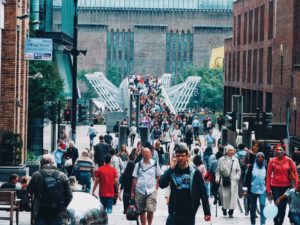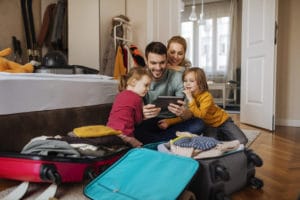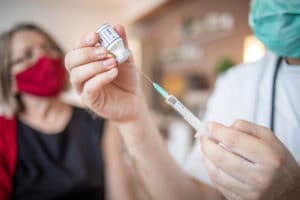Written by Eric Klasson. Originally published on LinkedIn.
167 years ago this month, cholera was ravaging the Soho district of London. While the germ theory was still years away, physician John Snow deduced that a pathogen of some sort was present in the water supplied by a pump on Broad Street.
How?
Snow mapped the cases of cholera. The clusters of cases, overlaid onto the homes, workhouses, and city blocks of Soho, pointed to the culprit. In other words, Snow used hyperlocal data for effective pathogen surveillance.
A little more than a century and a half later, pathogen surveillance has only grown in importance. The COVID-19 pandemic left millions dead and savaged the global economy, to say nothing of the dangerous variants that continue to wreak havoc worldwide. And there will be other pathogens in the future.
The fact is, ongoing pathogen surveillance is a must if we want to avoid lockdowns, preserve our quality of life, and maintain economic vitality.
Pathogens are a fact of life. Pandemics don’t have to be.
Pathogen surveillance works
Let’s define our terms.
The vigilance implied by “pathogen surveillance” is pretty clear: We are monitoring something – a population, a town, or a city block – for an infectious agent that can cause disease. Such pathogens are often airborne.
Pathogen surveillance is different from contact tracing, which looks to identify people who may have come into contact with an infected person. The foremost concern with pathogen surveillance is tracking bugs, not people.
Pathogen surveillance can be passive or active, as well as case-based, or aggregated and anonymized. Many of these methods are well-established and time-tested.
“Notifiable” diseases, for example, are required to be reported to authorities. (That includes cholera, which is still a threat decades after the outbreak in Victorian London.) Traditionally, pathogen surveillance has relied on doctors and hospitals to register known and novel infectious agents.
But technology is changing the game. This includes cutting-edge genomic tools, infectious disease modeling, and even surprising surveillance methods such as monitoring a city’s sewage for identified pathogens. The ubiquity of smartphones has also opened new horizons for pathogen surveillance, including participatory surveillance systems, digital disease detection, and exposure notification systems.
And big data is proving to be a key piece of the puzzle. Data pools can illuminate footfall patterns and human movement. Meanwhile, AI and machine learning have emerged to crunch the data and provide meaningful insights regarding pathogen surveillance and infection risk assessment, on a hyperlocal level.
How hyperlocal? We’re not talking by city or county, but by city block or building. And “bounding boxes” can refine that risk assessment further still, down to an area just a few meters wide.
In sum, pathogen surveillance has advanced by leaps and bounds, and demonstrated its value in monitoring outbreaks, and saving lives. There’s a remarkable convergence of computational firepower, available anonymized data that can pinpoint hyperlocal risk, and the real-time ability to act on those insights, thanks to the smartphones in our pocket.
Ongoing surveillance: COVID-19 & beyond
COVID-19 revealed the scope of the challenge and the sky-high stakes.
Early on, the countries that were most successful in “flattening the curve” were the ones that leaned into tech solutions for pathogen surveillance and contact tracing. Asian countries such as South Korea and Singapore embraced app-based pathogen surveillance and contact tracing early, and were able to weather the initial surge with fewer cases per capita. (These countries had prepared for an airborne pathogen like COVID-19 after the MERS and SARS outbreaks years earlier.)
Unfortunately, as all of us learned firsthand, COVID-19 also exposed the limitations of statewide or even countywide pathogen surveillance. For the average person (or business owner or school superintendent), such broad brushstroke numbers weren’t actionable. It was impossible to assess a particular risk, for a particular location.
This same bind forced government policymakers to resort to painful lockdowns, restricting human movement in a bid to limit transmission. This sledgehammer approach had dire economic consequences, and it exacerbated existing inequities. Many blue-collar, “essential” workers were still called on to work in person, facing unknown risk both at work and during their commute to and from the workplace.
We must do better – as we fight COVID-19, its variants, and future pathogens. That starts with ongoing pathogen surveillance.
The experts at McKinsey & Company put it starkly. Viewed only through an economic lens (although the societal case is easy to make as well), the math is simple. While the economic disruption of COVID-19 may top a staggering $16 trillion worldwide, it could cost a fraction of that – as little as $357 billion globally, or $5 per person, per year – to better prepare for future pandemic threats. Pathogen surveillance is a key part of that preparation.
Unlocking “mindful mobility”
Pathogens spread through human movement. So it stands to reason: A movement-based problem requires a mobility-focused solution.
In fact, unlocking the right kind of mobility – “mindful mobility,” that circumvents or limits risk – addresses some of the most intolerable consequences of the COVID-19 pandemic.
When people can move freely and safely, economy-crashing lockdowns become unnecessary. And mindful mobility, facilitated by a free mobile app, levels the playing field in significant ways. The essential workers (and their managers) who were asked to fly blind in 2020 can now assess and avoid street-level and facility-level risk.
Mindful mobility holds the promise to save lives – and save our economy – in the face of future pandemics.
Roamwell from Pandemic Insights is that mindful mobility solution.
Pathogen surveillance with Roamwell. A smart move.
The data sets are available. The computational power has reached an inflection point. The know-how exists.
Roamwell from Pandemic Insights pulls all those elements together, revealing key insights on a granular level. Buildings, streets, and facilities can be individually assessed for infection risk. And everyone can understand their personal risk index for airborne pathogens like COVID-19. (In fact, the mobile app even offers behavior modification messaging, to reduce that risk for infection.)
Different audiences can all benefit from Roamwell’s hyperlocal pathogen surveillance:
- Everyday people. Anyone, anywhere, can make informed decisions about personal risk and movement, with Roamwell’s mobile app (including a free version).
- Business owners and managers. Our SaaS offering gives business people much-needed insight into workforce, facility, and supply chain safety.
- Policymakers. Our SaaS platform gives policymakers a high-definition look at communities, allowing for nuanced policy and greater public buy-in.
- App developers. Now travel, transportation, navigation, ride-share, and university apps can overlay their outputs with hyperlocal risk data.
FYI: We are starting with the mobile app, to help as many individuals as possible. The remaining solutions will follow in 2022 and early 2023.
Roamwell has never been more needed than right now, when millions globally remain unvaccinated for COVID-19, including children under the age of 12 who are not yet eligible. (Not to mention the low-income populations of many developing countries worldwide, where less than 2% of eligible people have secured at least one dose.) And let’s not forget the rare-but-real threat of breakthrough infections for the vaccinated.
Hundreds of millions of families have at least one family member who is at risk, whether that’s a child, an elderly parent, or an immunocompromised person. With a mobility-based pathogen surveillance solution like Roamwell, those families can understand both personal and location-based risk.
Roamwell meets the moment today – and tomorrow. Roamwell facilitates mindful movement in the near term, as COVID and its variants are top of mind, but it is designed to surveil any pathogen, by synthesizing the right data, in the right way.
Which brings us back to John Snow and his cholera map of 1854. His eureka moment was illuminated by hyperlocal data.
At Pandemic Insights, we believe that Roamwell’s hyperlocal risk assessments have the potential to be just as revolutionary in the decades ahead. It’s the kind of pathogen surveillance we need now, to retain mindful mobility for everyone in the future.


